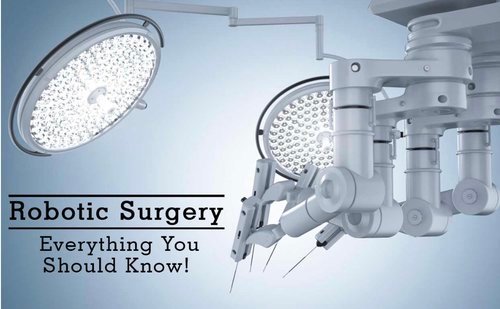Artificial Intelligence
Artificial Intelligence is taking over, and the world has mixed reactions. Some are excited about the progress made by humans, while some are skeptical about the results.
A direct influence of AI is in the advancement of robotics. Robots can now perform many complicated jobs and maneuver much more freely compared to earlier times. This has sometimes even led to fear about their human domination.
However, science is working towards taming robots for the betterment of humanity. Medical science has found a good use for robotic assistance in surgery. Let us find out how it works.
A human Surgeon is Indispensable.
Contrary to what some people might have heard, robotic surgery does not involve a group of robots performing an unassisted surgery. The robots are merely limbs, albeit more precise than human limbs, but the control is with a human surgeon.
Shortcomings of Laparoscopic Surgery
Robotic and laparoscopic surgeries are minimally invasive procedures that result in minimal bleeding, lesser pain during and after surgery, lesser complications compared to open surgery, and shorter hospital stays and related expenses.
However, laparoscopic surgery has some limitations. Laparoscopes give a 2-D image, so it is difficult for the surgeon to get to the exact point to operate without guiding themselves with the surgical instrument and seeing it through the visuals. If magnified, visuals can lose quality to an extent.
Also, since the incisions are tiny, in the case of laparoscopy, the surgeon has very little room to move about the wrist and get the instruments to the right place without injuring the nearby tissues or nerves, at least a little bit. Only a very experienced surgeon can perform laparoscopic surgery without collateral damage.
The Advancement of Surgery with Robotic Assistance
Minimally invasive surgery aims to ensure less pain and fewer complications. Laparoscopic surgery offers that in comparison to open surgery. But it has its shortcomings that the best surgeons can only avoid.
In the case of robotic surgery, precision depends to quite an extent on the robotic arm. The instruments are much more advanced to help the surgeon perform perfect surgery.
The surgeon operates via a computer console where the images of the body’s insides are available in real-time and in 3D. Unlike in laparoscopy, this image is straightforward and can be magnified without the quality or resolution of the image dropping. With 3D imaging, unlike in 2D imaging in the case of laparoscopy, there is minimal risk of a mistake.
The surgical instruments are more advanced in the case of robotic surgery. The robotic arm or the endo-wrist can rotate 360 degrees, allowing small instruments to access the exact point needed and avoid the surrounding muscle tissues and nerves.
Robotic surgery, or robot-assisted surgery (to be clear about the procedure), is recommended for minimal damage to tissues, minimal infection or injury risk, minimal blood loss and pain, and minimal recovery time. The surgeon must be well-experienced in robot-assisted surgery because the ultimate success of the surgery lies in the precision of the surgeon s control of the robotic wrists.

